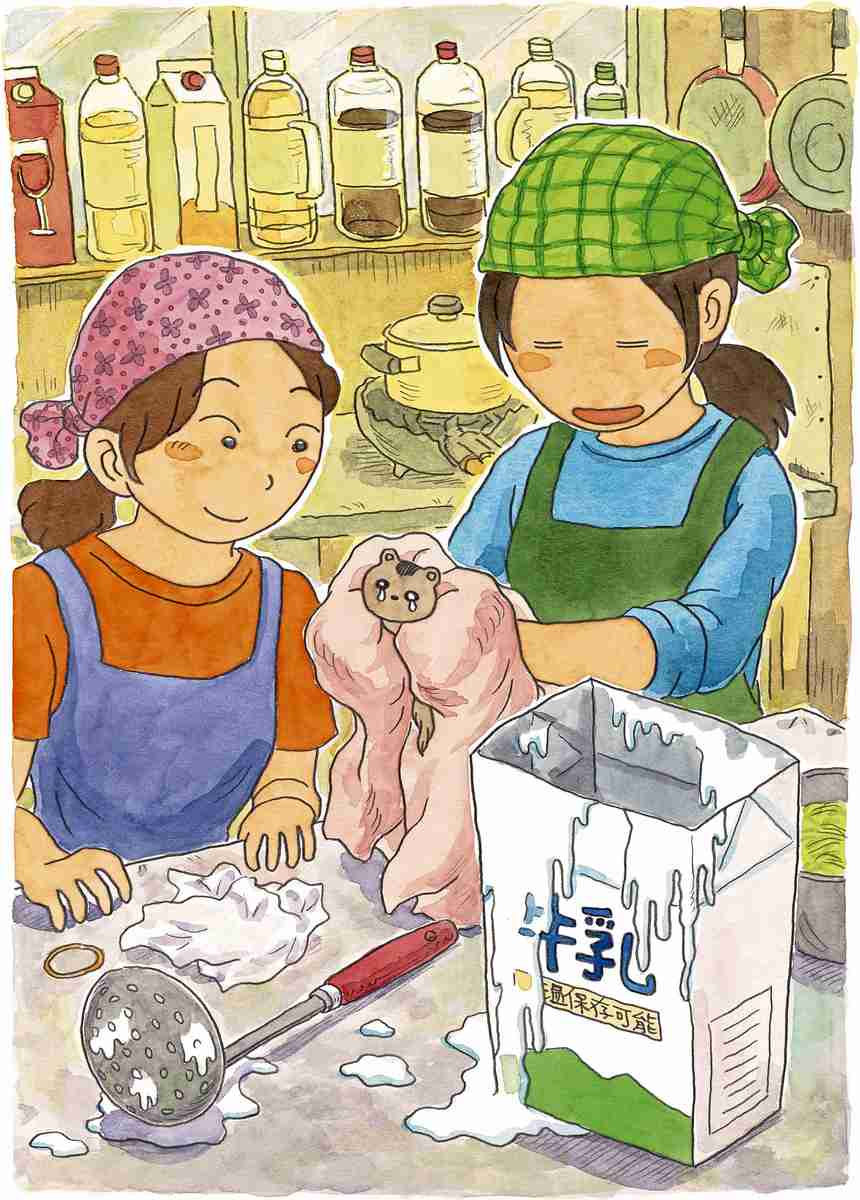August 19, 2025
TOYAMA – An illustrator who manages a mountain lodge in Toyama has published a book which tells stories about life deep in the mountains.

Yamato Keiko shows her book “Kurobe Genryu: Yamagoya Ryori-nin” in Toyama. PHOTO: THE YOMIURI SHIMBUN
Yamato Keiko’s book, “Kurobe Genryu: Yamagoya Ryori-nin” (Mountain lodge chef at the source of the Kurobe River) tells of the struggles she has when trying to preserve food as well as dealing with animals that try to enter the lodge. The stories are told with humor and include heart-warming illustrations.
The book, available for ¥1,760 including tax and published by Yama-Kei Publishers Co., is a compilation of articles that Yamato Keiko, 51, wrote over a two-year period for monthly mountaineering magazine “Yama to Keikoku,” which is also from the same publisher. The book also includes additional essays and other materials.

An illustration depicting the life in mountains. PHOTO: YAMA-KEI PUBLISHERS CO/THE YOMIURI SHIMBUN
Yamato’s lodge, called Yakushizawa goya, is located at an altitude of 1,920 meters in the Northern Japanese Alps in the southwestern part of Toyama Prefecture and close to the border of Gifu and Nagano prefectures. To get to the lodge from the center of Toyama, you have to drive for about an hour and a half before walking for seven hours up a mountain trail.
Yakushizawa goya, with its distinctive red roof, stands next to the headwaters of the Kurobe River. Yamato Keiko and her staff welcome visitors to the lodge, which is open from July to mid-October.
The book features many recipes for meals served at the lodge, along with illustrations and anecdotes. One of the lodge’s popular dinner dishes is kakuni braised pork, which has a strong flavor. Yamato Keiko included it on the menu after a staff member said she would use commercial yakiniku sauce to satisfy her craving for strongly flavored food while living in the mountains.
Other recipes introduced in the book are innovative ones such as noodles with spicy sesame-based soup made with tofu and ice cream prepared with satoimo taro.
There are also dishes that you would not expect to find in the mountains of the prefecture, such as oyaki. The snacks are a specialty of Nagano Prefecture that is typically made by wrapping a filling of pumpkin or nozawana leaves in a bun. Hatto, a traditional wheat flour dumpling dish from Miyagi Prefecture that is eaten with vegetables, is also featured.
The book also introduces stories mixed with humor about the hardships of life in the lodge.
Food is transported to the lodge once a month by a helicopter, which is costly, so Yamato Keiko tries her best to save money. According to the book, although electricity is available through a generator, she does not use a refrigerator. She tries to preserve food by drying it, putting adhesive tape around the cut ends of vegetables or by keeping them in water.
“I gradually come to feel affection for the foodstuffs while trying to preserve them,” Yamato Keiko said. “When they start to go bad, I tell them, ‘hold on.’”

An illustration shows a dormouse rescued from a package of yogurt. PHOTO: YAMA-KEI PUBLISHERS CO/THE YOMIURI SHIMBUN
The precious food attracts the attention of wild animals. Small creatures try to sneak in through small gaps in boxes of food, and Yamato said she often feels fed up with them eating all the vegetables. She even once “rescued” a dormouse that had fallen into a package of yogurt.
From these experiences, she came up with the idea of making a “yogurt factory” to make homemade yogurt safely. She now puts yogurt in a carton of milk and covers it with a cardboard box from above to let it ferment.
“In the mountains, you can feel a side of nature that cannot be felt in the ‘world below the mountains.’ I would be happy if people who read the book would come and visit us,” Yamato Keiko said.

